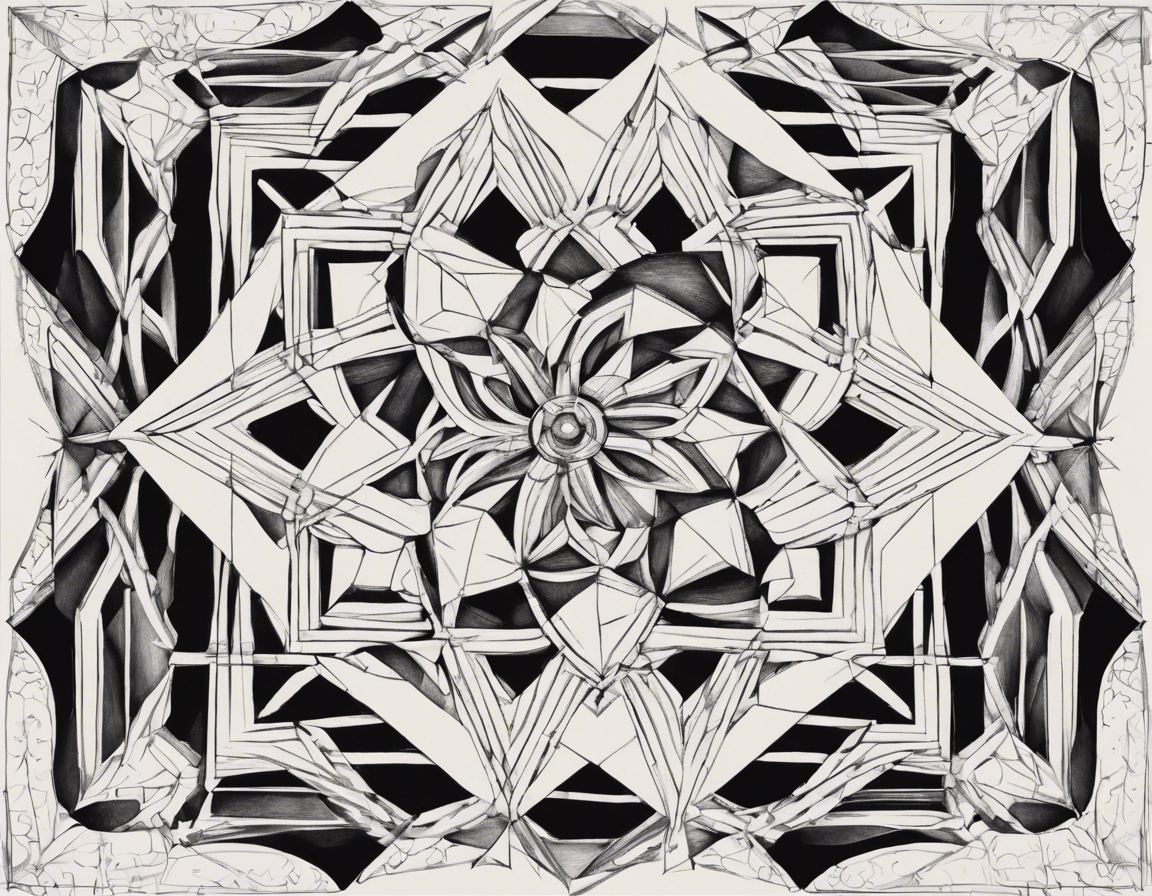
Unlock Your Creativity with Geometrical Design Drawing
Do you feel like you’re in a creative rut and looking for new ways to express yourself? Have you considered trying your hand at geometrical design drawing? This unique form of art combines the precision of geometry with the freedom of artistic expression, allowing you to create stunning visuals that are both structured and visually appealing. In this comprehensive guide, we will explore the world of geometrical design drawing, its benefits, techniques, and tips to help you unlock your creativity and take your art to the next level.
Understanding Geometrical Design Drawing
Geometrical design drawing is a form of art that involves using geometric shapes, patterns, and symmetrical arrangements to create visually striking compositions. By employing mathematical principles such as symmetry, balance, and proportion, artists can produce intricate and captivating designs that engage the viewer’s eye.
Benefits of Geometrical Design Drawing:
- Enhances Problem-Solving Skills: Working with geometric shapes can help improve your spatial reasoning and problem-solving abilities.
- Fosters Creativity: The structured nature of geometrical design drawing can spark new ideas and stimulate your creativity.
- Improves Focus and Concentration: The precision required in creating geometric designs can enhance your focus and concentration skills.
- Relaxation and Stress Relief: Engaging in geometrical design drawing can be a meditative process that helps reduce stress and promote relaxation.
Geometrical Design Drawing Techniques
1. Basic Shapes: Start by mastering basic geometric shapes such as circles, squares, triangles, and rectangles. These forms will serve as the building blocks for more complex designs.
2. Symmetry: Experiment with creating symmetrical designs by reflecting or rotating geometric shapes to achieve balance and harmony in your compositions.
3. Patterns and Repetition: Explore the use of patterns and repetition in your designs to create visual interest and cohesion. Experiment with different arrangements and scales to add depth to your artwork.
4. Perspective: Incorporate perspective techniques such as foreshortening and vanishing points to create the illusion of depth and dimension in your geometrical designs.
5. Color Theory: Learn about color theory and how different hues, tones, and shades can impact the mood and visual impact of your geometric drawings. Experiment with monochromatic, complementary, and analogous color schemes to enhance your compositions.
Tips for Geometrical Design Drawing Success
1. Practice Regularly: Like any form of art, geometrical design drawing requires practice to improve your skills and develop your unique style. Set aside dedicated time each day to hone your craft.
2. Study the Masters: Research and study the works of renowned geometric artists such as Piet Mondrian, Frank Stella, and Bridget Riley to gain inspiration and insights into geometric design principles.
3. Experiment and Explore: Don’t be afraid to experiment with different techniques, styles, and materials in your geometrical design drawing. Embrace the process of exploration and allow yourself to make mistakes and learn from them.
4. Seek Feedback: Share your geometrical designs with peers, mentors, or online communities to receive constructive feedback and insights that can help you grow as an artist.
5. Have Fun: Above all, remember to enjoy the process of creating geometrical designs. Let go of expectations and allow yourself to be playful and imaginative in your artistic pursuits.
Frequently Asked Questions (FAQs)
1. What materials do I need to start geometrical design drawing?
To start geometrical design drawing, you will need basic drawing supplies such as paper, pencils, erasers, rulers, and protractors. You can also experiment with markers, colored pencils, and digital drawing software for more advanced projects.
2. How can I overcome creative block in geometrical design drawing?
If you encounter a creative block in geometrical design drawing, try taking a break, seeking inspiration from nature or other art forms, collaborating with other artists, or exploring new geometric patterns and shapes.
3. Can geometrical design drawing be used for practical purposes?
Yes, geometrical design drawing can have practical applications in fields such as architecture, engineering, graphic design, and interior design. The principles of geometry and symmetry are often used to create visually appealing and structurally sound designs.
4. Are there any online resources or courses for learning geometrical design drawing?
Yes, there are many online resources, tutorials, and courses available for learning geometrical design drawing. Websites like Skillshare, Udemy, and YouTube offer a variety of tutorials and classes for artists of all skill levels.
5. How can I incorporate geometrical design drawing into other art forms like painting or sculpture?
You can incorporate geometrical design drawing into other art forms by using geometric patterns and shapes as a base for your paintings, sculptures, or mixed media artworks. Experiment with combining geometric elements with other techniques and mediums to create unique and dynamic pieces.
In conclusion, geometrical design drawing is a versatile and engaging art form that offers numerous benefits for artists of all levels. By exploring geometric shapes, patterns, and symmetrical arrangements, you can enhance your creativity, improve your problem-solving skills, and create visually stunning compositions that captivate and inspire. So pick up your drawing tools, unleash your imagination, and start exploring the world of geometrical design drawing today!


